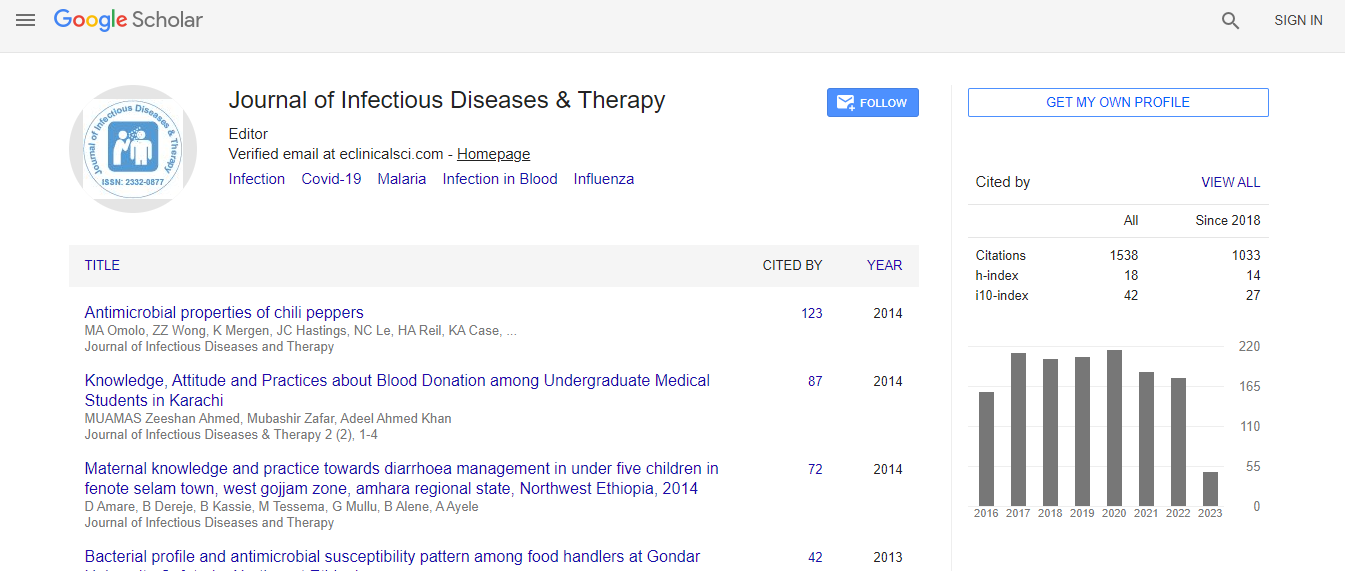Our Group organises 3000+ Global Events every year across USA, Europe & Asia with support from 1000 more scientific Societies and Publishes 700+ 51ºÚÁϳԹÏÍø Journals which contains over 50000 eminent personalities, reputed scientists as editorial board members.
51ºÚÁϳԹÏÍø Journals gaining more Readers and Citations
700 Journals and 15,000,000 Readers Each Journal is getting 25,000+ Readers
Citations : 1529
Indexed In
- Index Copernicus
- Google Scholar
- Open J Gate
- RefSeek
- Hamdard University
- EBSCO A-Z
- OCLC- WorldCat
- Publons
- Euro Pub
- ICMJE
Useful Links
Recommended Journals
Related Subjects
Share This Page
Absolute eosinopenia as a surrogate marker for enteric fever
Joint Event on 4th Annual Congress on Infectious Diseases & 5th International Conference on Neglected Tropical & Infectious Diseases
Swati Kapoor, Rajeev Upreti, Monica Mahajan, Abhaya Indrayan and Dinesh Srivastava
Max Super-speciality Hospital, India
Posters & Accepted Abstracts: J Infect Dis Ther
DOI:
Abstract
Enteric Fever is caused by gram-negative bacilli Salmonella typhi and para-typhi. It is associated with high morbidity and mortality worldwide. Timely initiation of treatment is a crucial step for the prevention of any complications. Cultures of body fluids are diagnostic, but not always conclusive or practically feasible in most centers. Moreover, the results of cultures delay the treatment initiation. Serological tests lack diagnostic value. The blood counts can offer a promising option in diagnosis. A retrospective study to find out the relevance of leucopenia and eosinopenia was conducted on 203 culture proven enteric fever patients and 159 culture proven non-enteric fever patients in a tertiary care hospital in New Delhi. The patient details were retrieved from the electronic medical records section of the hospital. Absolute eosinopenia was considered an absolute eosinophil count (AEC) of less than 40 / mm3 (normal level: 40-400/mm3) using LH-750 Beckman Coulter Automated machine. Leucopoenia was defined as total leucocyte count (TLC) of less than 4 X 109 /l. Blood cultures were done using BacT/ALERT FA plus automated blood culture system before first antibiotic dose was given. Case and control groups were compared using the Pearson Chi-square test. It was observed that absolute eosinophil count (AEC) of 0-19 /mm3 was a significant finding (p<0.001) in enteric fever patients, whereas leucopenia was not a significant finding (p=0.096). Using Receiving Operating Characteristic (ROC) curves, it was observed that patients with both AEC <14/mm3 and TCL <8 x 109/l had 95.6% chance of being diagnosed as enteric fever and only 4.4% chance of being diagnosed as nonenteric fever. This result was highly significant with p<0.001. This is a very useful association of AEC and TLC found in enteric fever patients of this study which can be used for the early initiation of treatment in clinically suspected enteric fever patients.Biography
E-mail: swatikapoor3012@gmail.com

